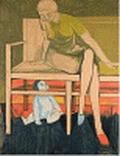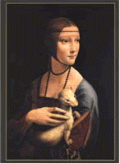 |
|
About Kraków "Kraków (IPA: ['krakuf] (help
.info)) or Cracow, also known
by its alternative and foreign names, is one of the oldest and
largest cities of Poland, with a 2004 population of 780,000 (1.3
million in metropolitan area).
This historic city, dating back to the 4th century, is
situated on the Vistula River in a valley at
the foot of the Carpathian Plateau,
between the Jurassic Rock Upland,
and the Tatra Mountains 100 kilometers (62 mi) to the south. It was the capital of Poland until 1596
and the capital of Kraków Voivodeship
from the 14th century to the year 1999. It is now the capital of the Lesser Poland Voivodeship in the
Lesser Poland region.
Wikipedia. The Free Encyclopedia. [14 August, 2007]. Available at: http://en.wikipedia.org/wiki/Krak%C3%B3w To find more information about Krakow please visit the following sites: www.krakow.pl www.cracow-life.com www.go-cracow.com www.guide-cracow.pl www.cracowonline.com www.krakow4u.pl The Local Organizing Committee's Three Picks:
The Gallery houses the largest collection of Poland's late nineteenth century and twentieth century modern art: paintings, sculptures, prints and installations.
2. Museum Lotnictwa w Krakowie (The Museum of Aviation) al. Jana Pawła II 39 The museum collection consists of more than one hundred aircraft, including gliders, helicopters and anti-aircraft missiles, and over two hundred aero engines. Several of aircrafts on display are unique in the world, such as the fuselages of World War I, German warplanes, including the Halberstadt C1.II, Albatross C.I., Aviatik C.III and Roland D.VI.
The Czartoryski Museum was founded in 1796 by Princess Izabela Czartoryska to preserve Polish heritage. It is a great example of a private museum, where the collection expanded from generation to generation of the House of Czartoryski. It is best-known for two paintings which Izabela's son, Prince Adam Jerzy Czartoryski, acquired in Italy in 1798, namely, Leonardo da Vinci's "Lady with an Ermine" and Raphael's "Portrait of A Young Man".
|





